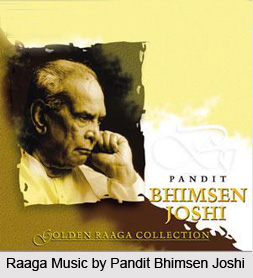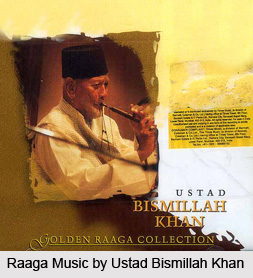 Development of Raaga in Indian Music has been the outcome of and been influenced by a number different factors. Raagas comprise one of the purest aspects of music, the non-referential part which existed even before Bharata wrote his treatise. Raaga should be examined from the point of conceptual expression of the lived style and philosophy of the enlightened community which experiences life in consonance with nature, other beings and other men who find through music their communication in the membership of the larger society.
Development of Raaga in Indian Music has been the outcome of and been influenced by a number different factors. Raagas comprise one of the purest aspects of music, the non-referential part which existed even before Bharata wrote his treatise. Raaga should be examined from the point of conceptual expression of the lived style and philosophy of the enlightened community which experiences life in consonance with nature, other beings and other men who find through music their communication in the membership of the larger society.
It has been observed by scholars of Indian Music that the manifestation of the Cosmic Being appears, from the point of view of men, to take place within three distinguished yet co-related orders. One is a successive order implying the same form of duration; the second is a matter of relative location implying the same form of space; and the third is an order of perception implying degrees of consciousness and therefore stages of manifestation." This envelopment of all the three orders (duration, space relative location of notes, and perception of raaga) could be found in this partial or perceptible universe- "channels through which to conduct our investigation into the extra sensorial world."
It is said that when a musician sings or performs a raaga, he has already prescribed for himself a path. He has a conception of raaga in his consciousness and engages himself in recreating the spirit through sensuous elements he has at his command. He accepts willingly all the parameters of raaga for reasons of his own sensibilities. In a way he is possessed by the raaga and consciously or subconsciously accepts the dictates of the raaga and the style. This dictation carries with it an entire thought and tradition behind the evolution of the raaga during the ages. Raaga is at once attributed to Divinity revealing its mystic powers. It is experienced as an aspect of divinity, and it is interconnected with other manifestations.

According to Hindu principles, all the aspects of the manifest would spring from similar principles. They have a common ancestry.
Raaga has lived through the Indian view of the cosmos, the Brahman, and has received the samskara all through and thus achieved the vitality to generate further sarhskaras as well. Considering the 2000-year old culture of raaga and the tree of raaga in an environment of its close co-life with other forms of arts, religion and Indian thought, the contour contents of the raaga as found at this end of the story, the present-day music, show vital signs of the culture we have lived through and of which we ourselves are the product.
One of the strongest factors in the development of Raagas has been the impact of nature. The intimacy with nature is one of the strong features of our Vedic culture. This is reflected in Vedic literature. Our melodic music based on the simple and natural scale may appear to some to be primitive or ethnic, but it is a phenomenon of organic order. Indian musical scale has remained stable, as it is called a Natural scale. It is as ancient and as modern as the structure of our physical body. It has in itself inherent harmonic structure based on the laws of physics and acquired by the human apparatus of voice under the natural evolution. The pentatonic scales or modes, the origin of which is attributed to folk music, provide relation of the thoughtful in our music to the musical sub-structure in the community life.
This connection with nature is best seen in the philosophy of treating certain raagas more appropriate for certain seasons, and raagas linked to certain hours or periods (prahams) of day or night. When considered in the context of our age-old agricultural economy and festivals connected with the cycle of crops and seasons, the tunes good enough to make the total expression more meaningful and explicit flowered in the form of folk songs and recitals. These served, very suitably, to nourish and celebrate life. The cycle of seasons provided a cycle of events-rituals, resulting in associations and conventions. Along with the literary-religious component of music, the musical component received simultaneously the same approach, words and tunes and ragas in service of gods of which they were the manifestation.
In sum, the mode of music received parallel and supporting treatment, providing and receiving nourishment at the same time. It is only during the modern times that purely aesthetic considerations have entered in and investigation has started to find the relation between melodies and psychological tensions.




















